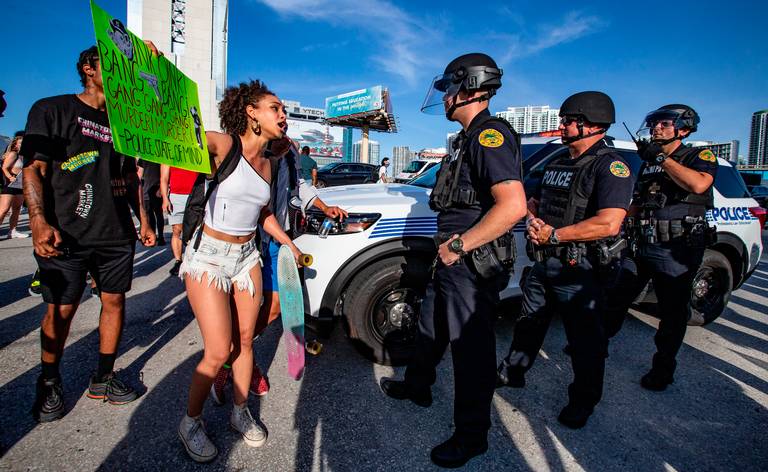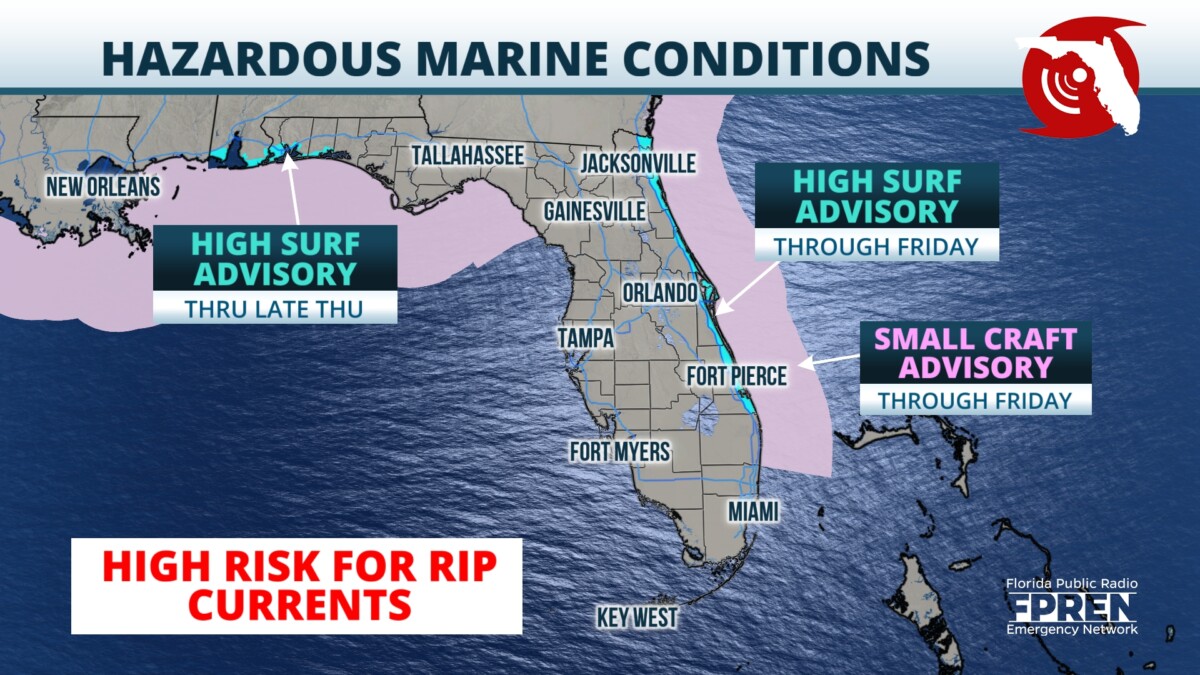Rejecting arguments that the law is ambiguous, the Florida Supreme Court said Thursday that peaceful protesters are not threatened by a measure that Gov. Ron DeSantis and the Legislature passed in 2021 to crack down on violent demonstrations.
DeSantis championed the law after nationwide protests following the 2020 death of George Floyd, a Black man who was killed by a Minneapolis police officer. But civil rights groups filed a federal lawsuit challenging the constitutionality of the measure, contending it could lead to peaceful protesters facing charges when demonstrations turn violent.
Chief U.S. District Judge Mark Walker in 2021 issued a preliminary injunction against the law, describing it as unconstitutionally “vague and overbroad.”
The state appealed, but the 11th U.S. Circuit Court of Appeals took a somewhat-unusual step of requesting help from the Florida Supreme Court with what it called a “novel” issue — how to determine the meaning of the word “riot” in the law.
Thursday’s main opinion disputed Walker’s conclusion that the law was ambiguous. It also agreed with DeSantis and the Jacksonville Sheriff’s Office, another defendant in the lawsuit, that a “peaceful protester, under the most natural reading of the statute, is no rioter.”
“At bottom, the question is whether that law applies to a person who is present at a violent protest, but neither engages in, nor intends to assist others in engaging in, violent and disorderly conduct. And the answer is: no, it does not,” said the 28-page main opinion, written by Justice John Couriel and joined by Chief Justice Carlos Muniz and Justices Charles Canady, Jamie Grosshans, Renatha Francis and Meredith Sasso.
The law says that a “person commits a riot if he or she willfully participates in a violent public disturbance involving an assembly of three or more persons, acting with a common intent to assist each other in violent and disorderly conduct” that results in an injury to another person, property damage or “imminent danger” of injury or property damage.
Justice Jorge Labarga wrote a concurring opinion Thursday that agreed with the result of the main opinion — though he said he thought the law was ambiguous.
“For purposes of (the law), a narrow interpretation of ‘violent public disturbance’ is essential to ensure that prosecutions involving violations of the statute do not capture the peaceful, nonviolent exercise of First Amendment rights nor criminalize the mere presence at or lawful participation in an otherwise peaceful assembly or protest,” Labarga wrote.
The Supreme Court ruling will go to the 11th U.S. Circuit Court of Appeals, which will use it in determining whether to overturn Walker’s preliminary injunction. The challenge to the law was filed by groups such as the Dream Defenders and the Florida State Conference of the NAACP.
In his 90-page decision, Walker pointed to concerns about vagueness of the law, which includes felony penalties.
“Though plaintiffs claim that they and their members fear that it (the law) will be used against them based on the color of their skin or the messages that they express, its vagueness permits those in power to weaponize its enforcement against any group who wishes to express any message that the government disapproves of,” Walker wrote. “Thus, while there may be some Floridians who welcome the chilling effect that this law has on the plaintiffs in this case, depending on who is in power, next time it could be their ox being gored.”
In Thursday’s main opinion, however, Couriel reviewed the history of Florida’s anti-riot laws and analyzed the grammar of the 2021 measure. He wrote that to get a conviction, prosecutors “must prove a defendant acted with intent to assist others in violent and disorderly conduct. This reading of the statute accords with the historical understanding of riot as a crime of violence … and indeed, with common sense.”
While attorneys for the civil-rights groups have argued the law violates First Amendment rights, they also asked the Supreme Court to narrowly interpret it to ensure peaceful protesters would not be affected.
“Although (as the district court held) the statute’s plain text is most naturally read to encompass non-violent protected speech, it is also fairly possible to construe the text narrowly to maintain the pre-existing common-law definition and avoid encroaching upon constitutionally protected expression,” the groups’ attorneys wrote in a brief last year.







